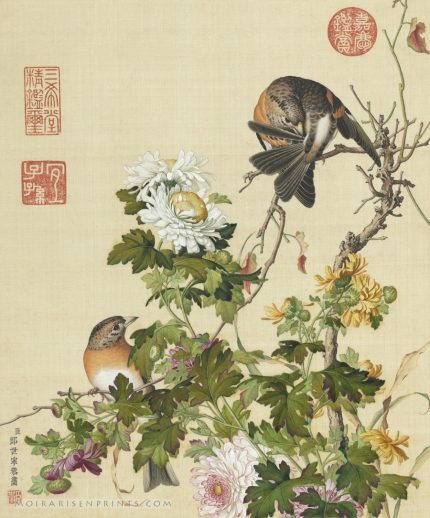Giuseppe Castiglione is one of those artists whose life story sounds so adventurous it would make a perfect material for an arresting novel or movie.
He was born in a wealthy family in 1688 in Milan, Italy. He studied painting from his early years, later he became a pupil of Master Carlo Cornara at the Botteghe Degli Stampator painting studio. At the age of 19 he joined the Society of Jesus as a lay brother, but he was never ordained as a priest. After a few years spent in Lisbon with painting murals and panels for the New Cathedral of Coimbra he was sent to the Qing court on request of emperor Kang’Xi who was interested in European painting.
He arrived to Beijing in 1715 and – after painting a few introductory works on the emperor’s request – was assigned to work as an artisan in the palace enameling workshop. In 1723 he was commissioned by the new emperor Yongzheng to paint One Hundred Horses, a large handscroll with a panoramic landscape that is considered by many as his greatest work. It took him five years to finish the painting that was never viewed by Yongzheng for some reason, but when in 1935 it was eventually presented to the newly enthroned Qianlong Emperor he was so impressed by the work that he assigned Castiglione the official rank of principal court painter. Castiglione became a respected and appreciated painter of the Qing court under the name Lang Shining and lived there until his death in 1766. He is buried in the European Missionary Graveyard in Beijing.
Castiglione forged a new style, adapting the taste and tradition of Chinese style painting and combining its elements with his Western training in art. His paintings often incorporate Western techniques of shading and atmospheric perspective, imparting a sense of realism to the native Chinese elements and themes. He painted the portraits of the emperor, the empress, and other high-rank officials, a series of large battle scenes, scrolls of horses and beloved dogs of the emperor, and – as a skilled architect – he was also commissioned with the design, implementation and execution of the new European Palaces in the Yuan Ming Yuan imperial gardens (unfortunately destroyed during the second opium war).
Among his most beautiful works is an album that is considered a masterpiece of the Yongzheng period: Immortal Blossoms In An Everlasting Spring (Xian’e Changchun) – 16 leaves of traditional flower-and-bird silk paintings created in his merged style between 1723-35.
Prints of the 16 pieces are available in our print store .
















